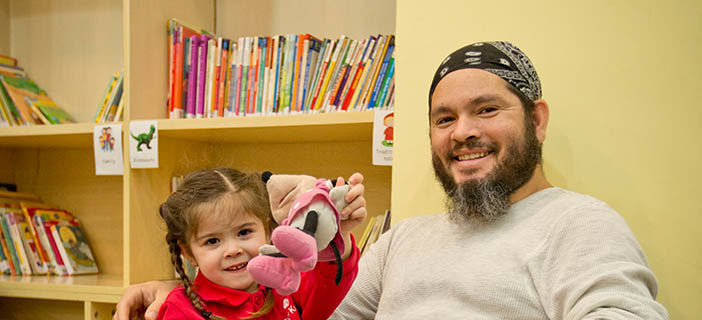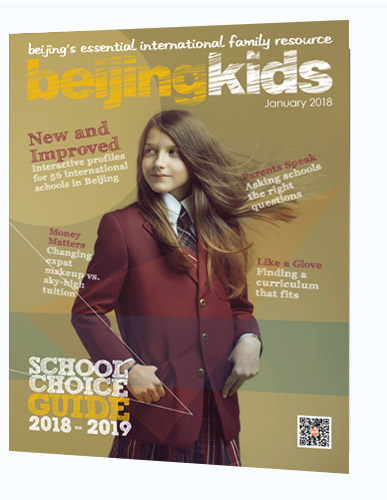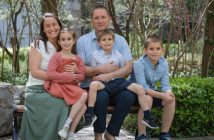Three-year-old Violet Lia Barquero Henkel arrived in Beijing at the end of July. She has been attending Ivy Bilingual Kindergarten in Orchid Garden since then. Born in Panama, Violet claims three nationalities: Panamanian, Costa Rican, and American. Dad Cristian Mauricio Barquero Hernandez is from Costa Rica, and mom Marissa Jane Henkel is from the US. The family loves that Violet will be learning both English and Chinese in a multiple-intelligence based curriculum, explaining that they didn’t really choose the school based solely on that curriculum alone but found it very interesting for the development of their child. Ivy is also sharing with the family every single step of their child’s academic growth on a weekly basis with a report and accompanying pictures so they can witness her progress. Since her first day, Violet has been excited every morning to get up and go to school. She sings songs that she has learned in class, shows her parents her paintings, and tells them stories about friends. In her short time at Ivy, Violet has developed new friendships and is learning to speak some Chinese. Most importantly for the parents, they feel content that their daughter is growing in a school where she is confident, happy, and engaged.
Favorite teachers
Ako and Wang Ying
Favorite thing about the school
Playing!
Favorite spot in the school
The art room
Favorite class
Physical education. She gets very excited when she is having this class.
Favorite afterschool activity
Ivy’s music and movement class.
Curriculum Spotlight: Multiple Intelligences
In his 1983 book, Frames of Mind, Dr. Howard Gardner first proposed the Multiple Intelligences theory framework. The Harvard University professor theory states that people, even children, learn and think differently, and there are numerous ways intelligences can manifest. The main intelligences Dr. Gardner identified are linguistic, logical-mathematical, spatial, bodily-kinesthetic, musical, interpersonal, intrapersonal, and naturalist. In Beijing, the Ivy Education group incorporates these elements into the various curricula including a bilingual aspect. We spoke to the people at Ivy Academy to share with us how they use this curriculum as a foundation.
What’s unique about the curriculum?
The aim of the curriculum is to customize teaching methods that focus on educating the children according to their individual abilities and needs in a dynamic, play-based, and supportive environment. The teaching plans are more student-centric than the traditional academic subjects.
How is it applied?
With a Multiple Intelligences-style curriculum, educational institutions use wide-ranging approaches, exercises, and activities to try and reach all students. The theory is a building block since there isn’t a single preferred model and schools have adopted the eight intelligences to numbers or logic, pictures, words, natural, social interaction, music, and/or personal experience.
Here’s an overview:
- Linguistic: The ability to use language to express what’s on our minds and to understand other people (e.g. word games, spelling, reading books, and looking at pictures)
- Logical-mathematical: The ability to think logically and to use and manipulate numbers, quantities, and operations (e.g. science experiments, math, Lego, and construction)
- Spatial: The ability to represent the spatial world in one’s mind (e.g. art and craft activities)
- Musical: The ability to perceive and understand patterns of sound as well as creating and communicating meaning from sound (e.g. playing instruments, listening to music, composition, singing)
- Bodily-kinesthetic: The ability to use fine and gross motor abilities (e.g. moving to music, playing dress-up, puppet shows)
- Interpersonal: The ability to understand people and relationships (e.g. team games and activities)
- Intrapersonal: The ability to understand oneself, one’s thoughts and feelings (e.g. working alone and independently)
- Naturalist: The ability to understand and work with the natural world and the environment (e.g. gardening, looking at insects)
How well does this education system prepare students for the real world?
Children are taught to become self-confident, to get along well with others, to be problem solvers, to make good choices, and to see themselves as children with good ideas – all of which are valuable life skills.
Where is it offered?
This curriculum can be found in schools around the world. This can mainly be found in kindergarten and elementary schools as a foundational learning implementation
Photo: Uni You
This article originally appeared on p12-13
of beijingkids School Choice Guide 2018-2019.





